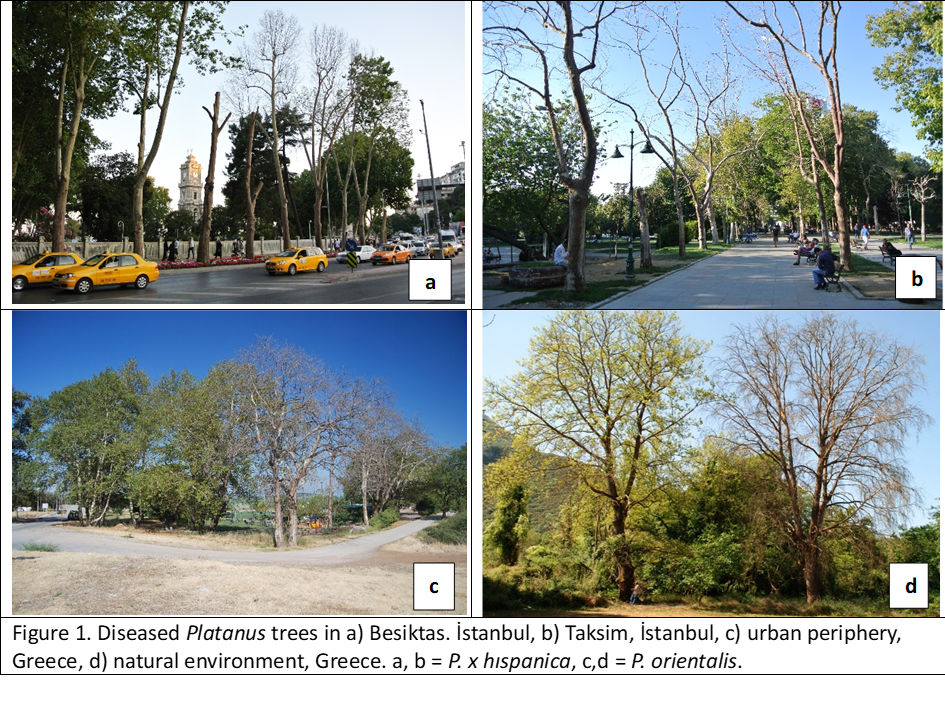Section outline
-
In urban settings, Platanus are often planted as a single species along avenues or in park settings. Following infection with Ceratocystis platani, the first symptoms to appear are chlorotic and wilting foliage on a single branch, possibly along with sap exudation from cracks in the branch and stem bark. Such symptoms are more likely to be seen in avenue plantings (Figure 1. a, b), as in parkland or woodland settings (Figure 1. c, d), vision can be obscured by surrounding trees. Close inspection will reveal stem/branch cankers (lesions) Figure (2. a, b). Over time, the necrotic bark turns pale-brown and cracks, but remains attached to the tree; no wound callus forms at the lesion margins. When cutting away the bark beyond the lesion, orange/brown staining is visible in the inner bark and vascular cambium. These symptoms are most marked at the upper and lower edges of the lesion. As lesions girdle the trunk or a main branch, the bark beyond the lesions turns reddish-brown as the tissues die. In cross-section, affected branches show bluish-black, then brown, spindle-shaped patches, extending radially and more or less side by side (Figure 2. c). In the highly susceptible host trees found in Europe and Eurasia, infections are always lethal, although trees can take from a few months to 2.5 – 3 years to die, depending on size and pre-infection vigour. Further details are available elsewhere (Walter, 1946; Griffin, 1968; Vigouroux, 1979a; Panconesi, 1981; Tsopelas et al., 2017).
Earlier in infection development, sap exudation can be observed from small cankers, visible as dark staining in tissues below cracks in the bark surface. The exudation becomes oxidized, turning dark brown. Small cankers are more obvious on smooth-barked species, such as P. occidentalis and P. x hispanica than on the rough bark of P. orientalis (Panconesi, 1981; Walter et al., 1952).
